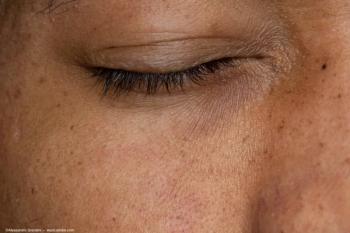
Extension study reveals safety, durability of ranibizumab
New Orleans-Two phase III trials, one phase II trial, and one extension trial are under way for anti-VEGF agent, ranibizumab (Lucentis, Genentech). The extension trial indicates that ranibizumab provides a long-term benefit to patients and that it is well tolerated, according to Jeffrey S. Heier, MD, who described the studies during the retina subspecialty day here at the American Academy of Ophthalmology annual meeting.
New Orleans-Two phase III trials, one phase II trial, and one extension trial are under way for anti-VEGF agent, ranibizumab (Lucentis, Genentech). The extension trial indicates that ranibizumab provides a long-term benefit to patients and that it is well tolerated, according to Jeffrey S. Heier, MD, who described the studies during the retina subspecialty day here at the American Academy of Ophthalmology annual meeting.
The MARINA phase III trial enrolled 716 patients with minimally classic or occult choroidal neovascularization (CNV) and patients received either sham injection or 0.3 or 0.5 mg of ranibizumab monthly for 2 years. The patient enrollment ended in December 2003.
The primary endpoint is the percentage of patients who lost less than 15 letters of vision 12 months after the start of treatment. The secondary endpoints include mean change in visual acuity, proportion of patients gaining 15 letters or more of visual acuity, and angiographic data, Dr. Heier outlined. He is clinical instructor in ophthalmology, Tufts School of Medicine, and clinical instructor in ophthalmology, Harvard Medical School, both in Boston.
The third study, the phase I/II FOCUS trial, is investigating the effect of 0.5-mg ranibizumab plus PDT administered once a month for 24 months compared with verteporfin PDT alone in patients with predominantly classic CNV. Enrollment of 162 patients was completed in January 2004. The endpoints are similar to those of the ANCHOR trial, according to Dr. Heier.
The 2508 trial is an open-label extension of study for approximately 70 patients who successfully completed participation in three phase I/II trials and met certain inclusion criteria. The trial is determining the long-term safety and tolerability of the multiple intravitreal injections of ranibizumab for an additional 2 years.
"This extension trial has several limitations," Dr. Heier said. "It was not designed for critical evaluation, because it is essentially a compassionate-use trial. It is open-labeled and not controlled. Dosing guide- lines are flexible and investigators interpret them differently.
"There was variability in time from the end of the patients' treatment until their enrollment in the extension trial," he added. "There were also variations in the frequency of treatment and in follow-up."
Most of the patients, he pointed out, were treated 3 to 12 months after the last injection of ranibizumab in the original phase I/II study.
It is noteworthy, he said, that most of the patients were having a decline in visual acuity and may have ended ranibizumab treatment 4 to 6 months previously before the extension trial began. The long-term follow-up for these patients extends from 1 to 2 years or more.
"There are two main points. The first is that during the time when patients were not treated, the beneficial effect of ranibizumab was maintained in most patients," he said. "The second point is that over time, under flexible treatment rules, patients continued to demonstrate a benefit from the treatment. The beneficial effect was seen in patients with different subtypes of neovascular age-related macular degeneration."
He reported that 1 year after the start of treatment patients generally still maintained a treatment benefit of between 3 and 4 EDTRS letters (approximately 1 line) above the enrollment value.
"We believe that this study allowed us to see that visual acuity remained at or above pre-treatment levels," Dr. Heier said. "Most patients maintained a good visual acuity level despite a mean of 6 months between ending treatment in the previous trial and beginning treatment in the extension trial."
Newsletter
Don’t miss out—get Ophthalmology Times updates on the latest clinical advancements and expert interviews, straight to your inbox.


















































.png)


